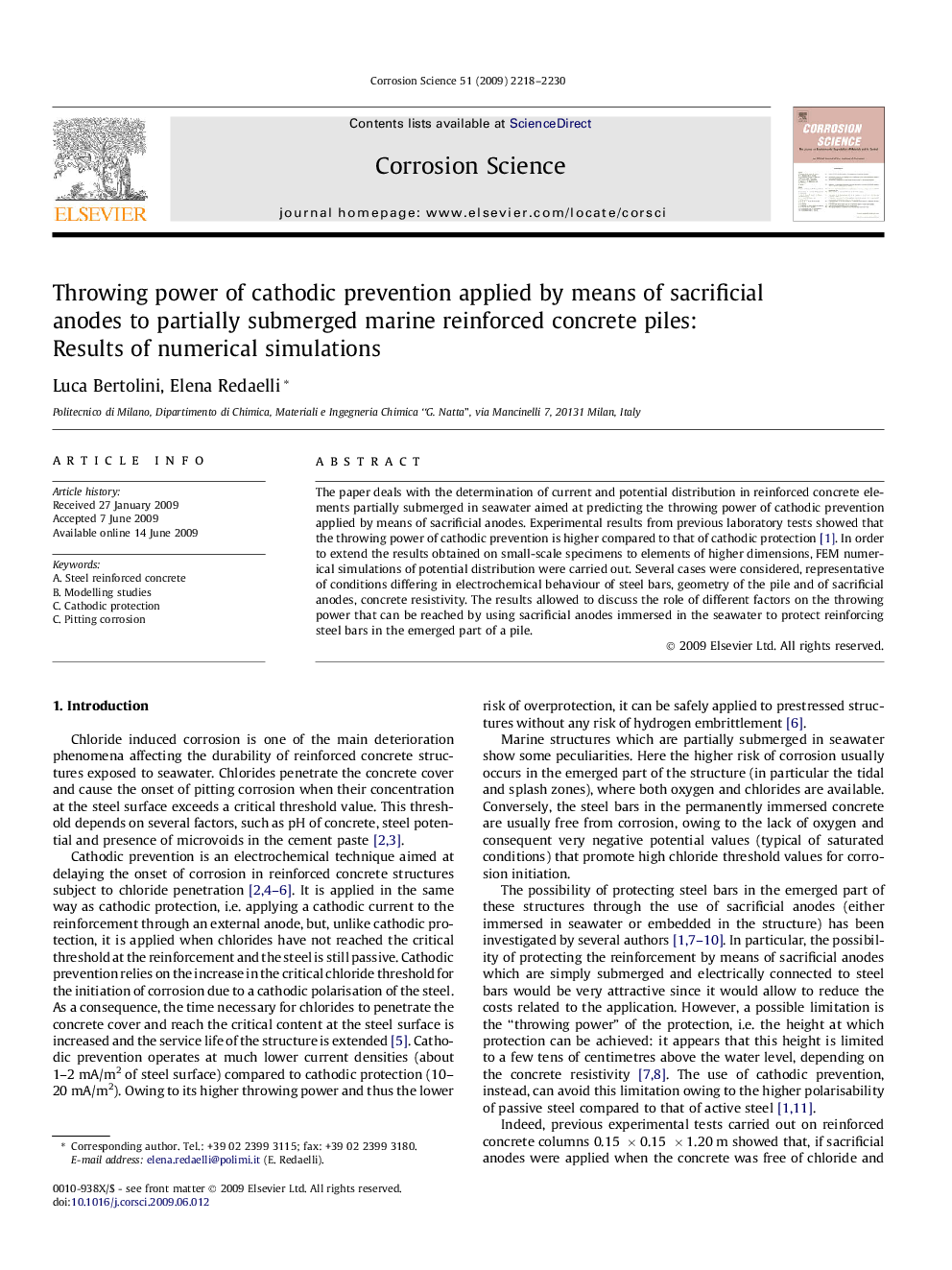| Article ID | Journal | Published Year | Pages | File Type |
|---|---|---|---|---|
| 1470930 | Corrosion Science | 2009 | 13 Pages |
The paper deals with the determination of current and potential distribution in reinforced concrete elements partially submerged in seawater aimed at predicting the throwing power of cathodic prevention applied by means of sacrificial anodes. Experimental results from previous laboratory tests showed that the throwing power of cathodic prevention is higher compared to that of cathodic protection [1]. In order to extend the results obtained on small-scale specimens to elements of higher dimensions, FEM numerical simulations of potential distribution were carried out. Several cases were considered, representative of conditions differing in electrochemical behaviour of steel bars, geometry of the pile and of sacrificial anodes, concrete resistivity. The results allowed to discuss the role of different factors on the throwing power that can be reached by using sacrificial anodes immersed in the seawater to protect reinforcing steel bars in the emerged part of a pile.
